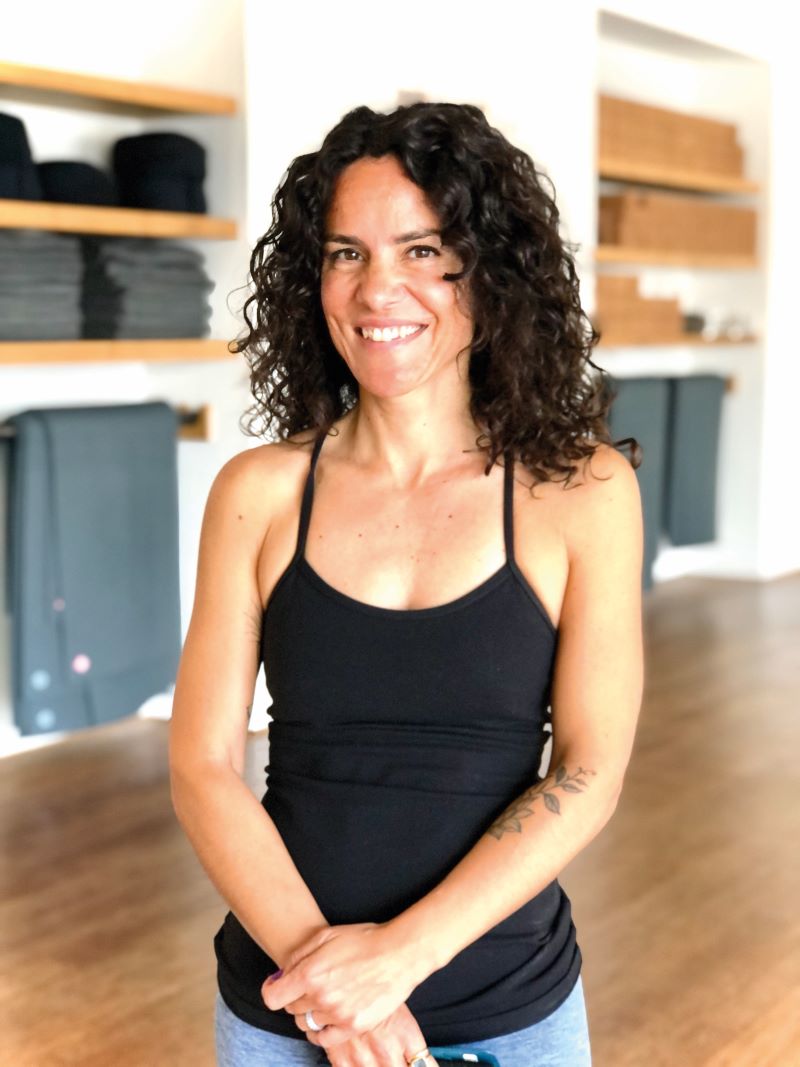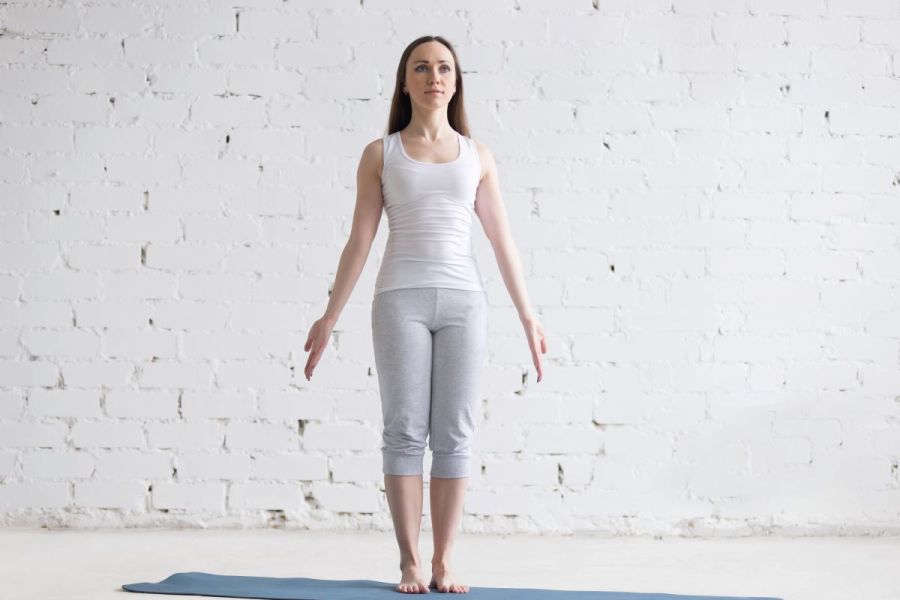
Iyengar yoga expert Adela Serrano
Wondering what yoga alignment is? Discover why alignment is important in yoga and how to be fully embodied in your practice with this advice from Iyengar yoga expert Adela Serrano.
Turn your right foot out 90 degrees, take your thigh parallel to the mat, don’t let your knee extend beyond your ankle… alignment cues such as these in yoga not only guide us into a pose, they keep us safe and help us become more aware of our body in the present moment. But, as useful as they are, instructions for the physical positioning of your body are only one aspect of what it means to be truly aligned in yoga.
Related content:
- What is yoga? Benefits & basic principles for beginners
- Yoga self practice: how to design sequences at home
- 10 minute yoga glute workout to tone your bum
‘The purpose of alignment is to bring awareness to every cell in your body,’ explains Adela Serrano, Iyengar yoga teacher with Ekhart Yoga. ‘It is the physical, breathing and mental aspects of the pose – and it is by fully embodying the pose that you find the alignment.’
Perhaps you’ve experienced being fully present in a pose – maybe you felt strongly rooted to the earth, as if nothing could disturb your equilibrium, or perhaps felt open and expansive, as if your body was pulsating with energy. What is happening in these moments is that your body, mind and emotions are in harmony – with yourself and with your environment. In essence, embodying a pose relates to the very root of the word yoga, which means ‘to unite’.
Need some kit? Discover the best yoga clothes
If you’d like to deepen your experience of alignment, Serrano suggests concentrating on three areas, the physical body, the breath and the direction of your gaze, and by starting with the basics. ‘The blueprint for all yoga poses is tadasana [mountain pose]. If you have misalignment in tadasana, you will be misaligned in the rest of your practice,’ she says. Find alignment in tadasana, then apply the same principles to your time on the mat.
How to ground yourself in tadasana (mountain pose):
You may already be familiar with the physical cues for tadasana (see below), but Serrano adds another dimension. ‘Be aware of your back body, also. When we focus on the front body, it has an impact on the back body. If you have a “bootcamp stance”, for example, with your chest out and shoulders back, you’ll jam your back,’ she says.
‘Also, because your diaphragm is attached to your back ribs, this will diminish its capacity to move, in turn affecting your breath.’ If you sense yourself becoming rigid in tadasana, soften your lower belly, your groin and slightly soften the backs of the knees, she says.
Physical alignment checklist for tadasana:
- Feet shoulder-width apart, inner edges parallel, weight balanced evenly over each foot. Spread your toes and root through base of big and little toes. Lift inner arches by drawing ankles away from each other.
- Align knees over ankles, pelvis over knees. Relax your buttocks and allow your tail and sitting bones to release.
- Draw your navel towards your spine and release shoulders down your spine. Arms loose to sides, lengthening through middle finger. Release and lengthen back of the neck.
- Breathe evenly, grounding through your feet and feeling the corresponding lift in your spine as you lengthen through to the crown of your head.
Can you lose weight doing yoga?
Breath and body alignment in yoga
The second aspect of alignment involves what Serrano calls ‘the breathing body’. To fully embody any pose, there needs to be a harmonious relationship between your physical body and your breath. You may be able to arrange your body into dancer pose, for example, but if your breath is ragged or laboured, you won’t be practising yoga, but doing something closer to gymnastics. To develop balance between the breath and the body, Serrano suggests practising the following five-minute exercise while in mountain pose*.
‘Begin with an exhalation, then inhale and, as you exhale, connect to a light lift in the muscles of the pelvic floor. Next, take a normal inhalation and feel the expansion, then connect to a point just below your navel, and, as you exhale, imagine drawing a line from there to your back body and following it with your breath.
Inhale naturally, then exhale from your solar plexus (the soft part where the ribs meet at the front rib cage), tracing a line through to your back body. Inhale again, and exhale from the throat, spreading out the back of the neck. Then, on the next inhalation, feel the breath coming into the head. Finally, feel the whole body breathing, as if all the pores of the skin were inhaling and exhaling.’
Learn more about yogic breathing techniques
Aligning your dristi (gaze) in yoga:
The third element of Serrano’s alignment template is your dristi, or gaze. You’ve probably noticed fixing your gaze at a point in front of you in tree pose helps you keep physical balance. The reason for this is that your eyes are deeply connected to the activity of your mind, believes Serrano. ‘When the eyes find a place to rest, the thinking mind goes into “no mind”. The dristi draws your consciousness away from around you, and directs your awareness inwards,’ she explains. In turn helping you find focus and stillness.
In tadasana, your gaze is directed onto the floor, a couple of metres in front of you, so spend some time exploring the difference this makes to your experience of the pose. Then, as you build up familiarity with each of three aspects of alignment – your body, breath and mind – you also become aligned, or united, with yourself.
‘This happens in a spontaneous way,’ says Serrano. ‘You come into a state of concentrated quietness, feeling very present in your body and mind, but also feeling very light at the same time. By practising in this way, you start to feel as if you’re coming back home, and finding your place in the world.’
Words: Eve Boggenpoel | Lead image: Shutterstock







